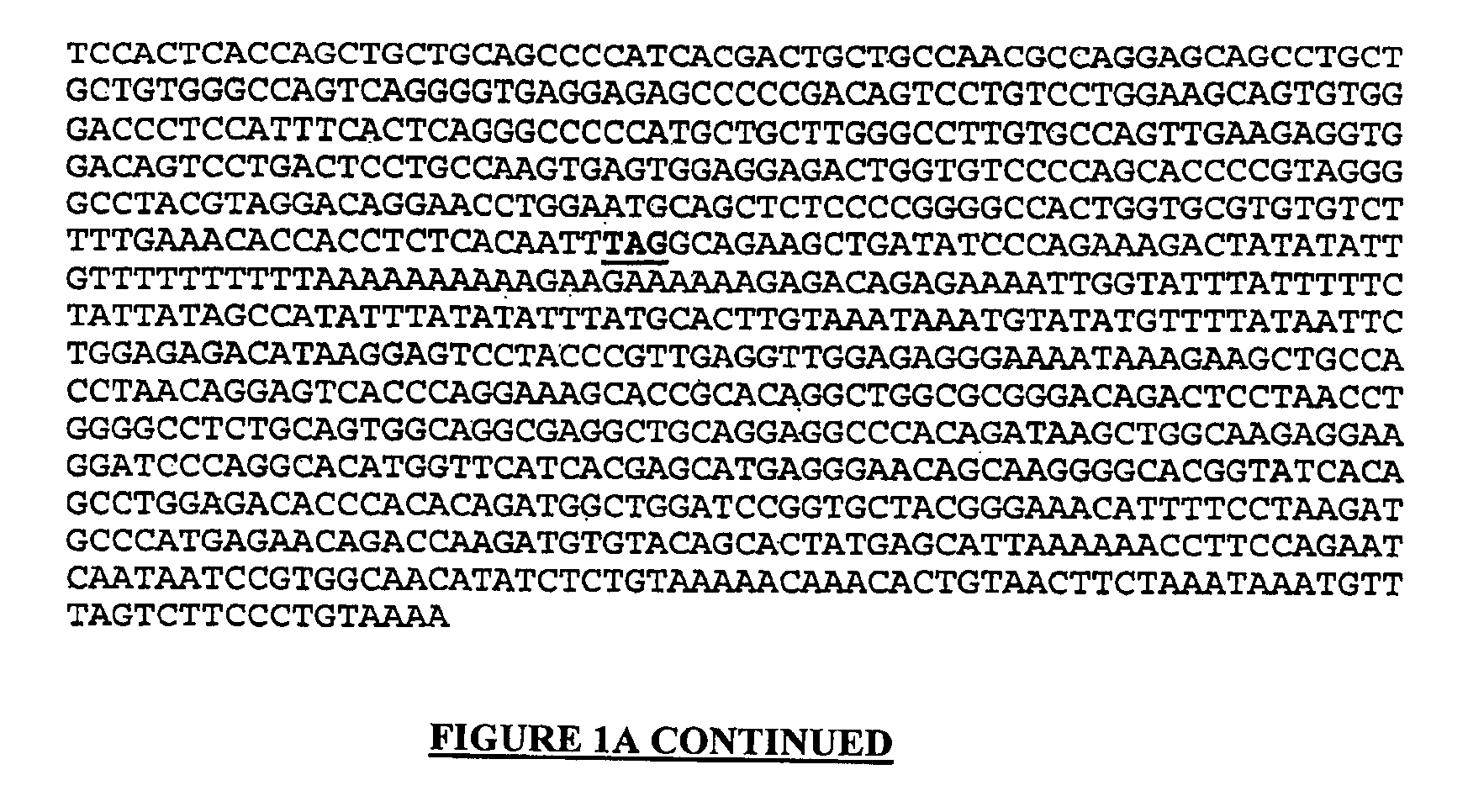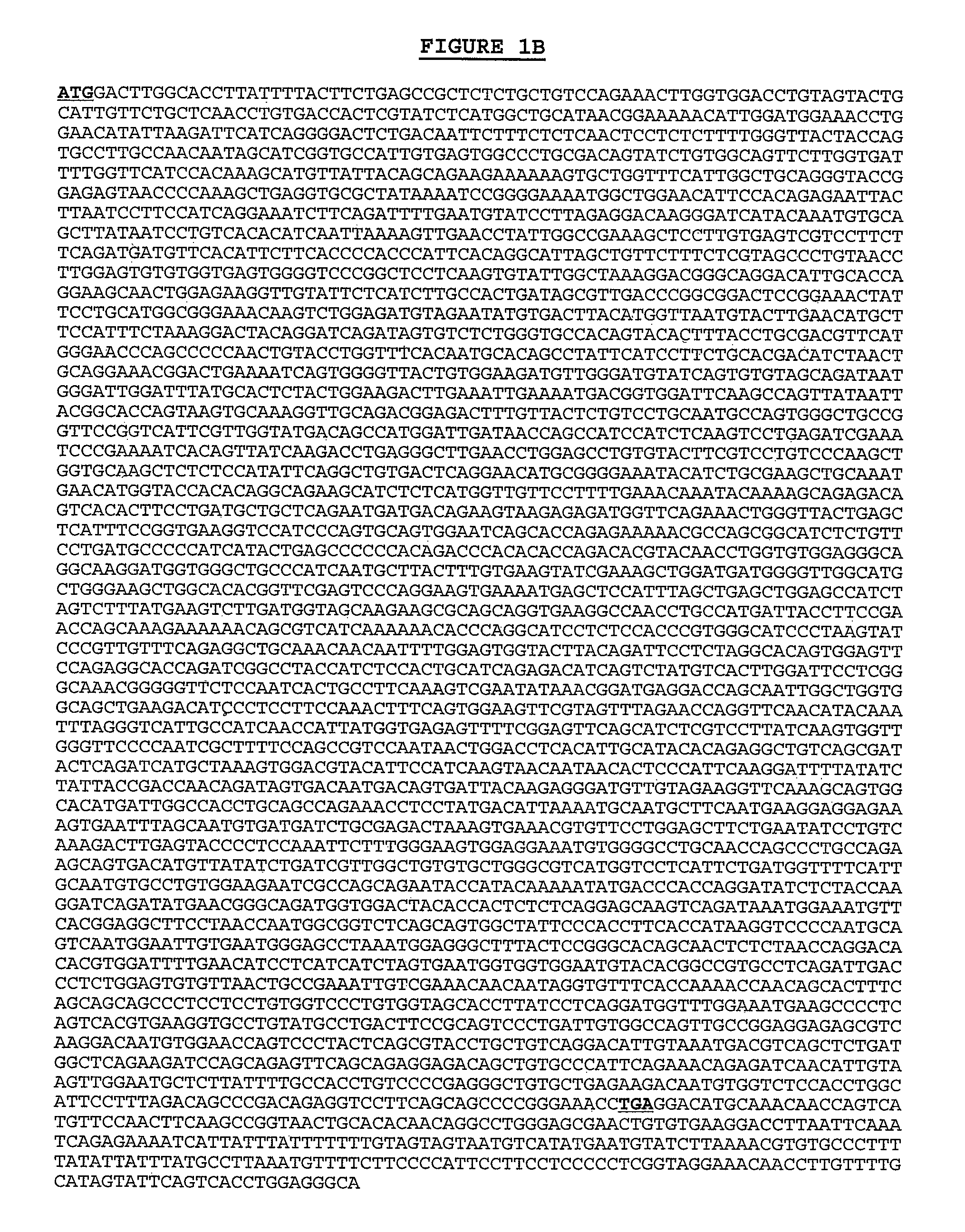Method for using BOC/CDO to modulate hedgehog signaling
a technology of boc/cdo receptor and hedgehog signaling, which is applied in the field of boc/cdo receptor proteins to modulate hedgehog signaling, can solve the problems of loss of hedgehog signaling response and insufficient involvement of hpe alone in hedgehog signaling, so as to prevent activation of the canonical hedgehog signaling pathway and amplify hedgehog signaling activity
- Summary
- Abstract
- Description
- Claims
- Application Information
AI Technical Summary
Benefits of technology
Problems solved by technology
Method used
Image
Examples
example 1
Isolation of cDNA Clones Encoding Human PRO1190
[0460]The extracellular domain (ECD) sequences (including the secretion signal sequence, if any) from about 950 known secreted proteins from the Swiss-Prot public database were used to search EST databases. The EST databases included public EST databases (e.g., GenBank). The search was performed using the computer program BLAST or BLAST2 [Altschul et al., Methods in Enzymology, 266:460-480 (1996)] as a comparison of the ECD protein sequences to a 6 frame translation of the EST sequences. Those comparisons resulting in a BLAST score of 70 (or in some cases, 90) or greater that did not encode known proteins were clustered and assembled into consensus DNA sequences with the program “phrap” (Phil Green, University of Washington, Seattle, Wash.).
[0461]This method allowed the identification of a single Merck / Washington University EST sequence, EST no. AA339802, from which oligonucleotides were synthesized: 1) to identify by PCR a cDNA library...
example 1a
Identification of Clones Encoding PRO38430
[0471]The clone DNA227967 (UNQ9067) may be isolated in a manner similar to that described above for DNA59586. Alternatively, similar CDO related sequences are publicly available under accession number NM—016952. The predicted polypeptide is 1240 amino acids in length. The full-length PRO38430 show in FIG. 2B has an estimated molecular weight of about 134,024 Daltons and a pI of about 6.38. Other features of the PRO38430 protein includes a transmembrane domain at about residues 941-961, Immunoglobulin domains at about residues 19-75, 212-268, 302-358, 395-478, Fibronectin type III domains at about residues 553-643, 697-783, 799-892, Immuno Tyrosine Inhibition Motif at about residues 972-992.
example 2
Microarray Analysis to Detect Downregulation of BOC Polypeptides and / or Upregulation of CDO Polypeptides in Cancer or Tumors
[0472]Nucleic acid microarrays, often containing thousands of gene sequences, are useful for identifying differentially expressed genes in diseased tissues as compared to their normal counterparts. Using nucleic acid microarrays, test and control mRNA samples from test and control tissue samples are reverse transcribed and labeled to generate cDNA probes. The cDNA probes are then hybridized to an array of nucleic acids immobilized on a solid support. The array is configured such that the sequence and position of each member of the array is known. For example, a selection of genes known to be expressed in certain disease states may be arrayed on a solid support. Hybridization of a labeled probe with a particular array member indicates that the sample from which the probe was derived expresses that gene. If the hybridization signal of a probe from a test (disease...
PUM
| Property | Measurement | Unit |
|---|---|---|
| concentrations | aaaaa | aaaaa |
| temperature | aaaaa | aaaaa |
| pH | aaaaa | aaaaa |
Abstract
Description
Claims
Application Information
 Login to View More
Login to View More - R&D
- Intellectual Property
- Life Sciences
- Materials
- Tech Scout
- Unparalleled Data Quality
- Higher Quality Content
- 60% Fewer Hallucinations
Browse by: Latest US Patents, China's latest patents, Technical Efficacy Thesaurus, Application Domain, Technology Topic, Popular Technical Reports.
© 2025 PatSnap. All rights reserved.Legal|Privacy policy|Modern Slavery Act Transparency Statement|Sitemap|About US| Contact US: help@patsnap.com



